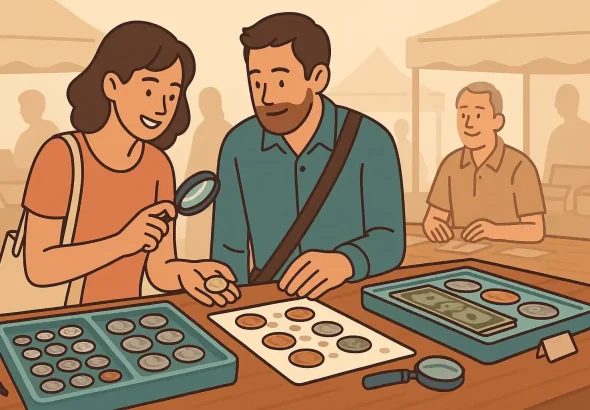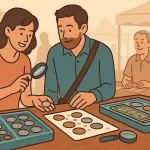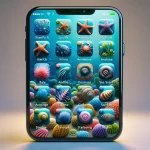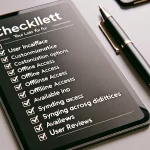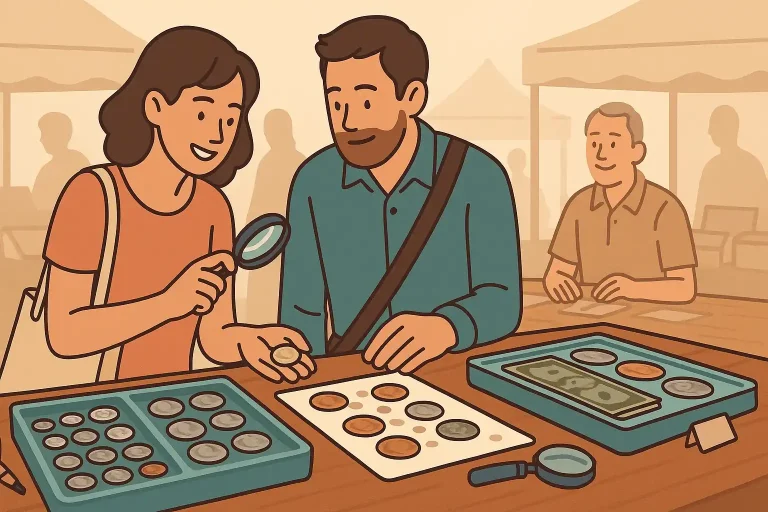Check Your Change Jar for a Treasure:
How to Identify Valuable US Coins
Ever Wondered if Your Spare Change Could Hide a Fortune?
Every day, Americans unknowingly carry tiny treasures in their pockets, purses, and glove compartments. Those coins rattling in a jar on your kitchen counter might be more than just loose change — they could be worth hundreds, even thousands, of dollars, and the value of 1943 steel wheat penny would really surprise you.
With a little attention to detail and some smart tools, anyone can turn casual coin sorting into a profitable and exciting hobby. In this guide, you’ll discover exactly how to spot valuable US coins, how to care for them properly, and how to make technology work for you in the process.
Why Check Your Change?
While millions of coins are minted every year, a handful slip through the system bearing rare errors, historical significance, or sheer scarcity. These rare gems often end up in everyday circulation, making it possible for anyone — not just seasoned collectors — to make a lucky discovery.
Here’s why digging through your change jar matters:
- Accessible Treasure Hunt: No investment needed; just start with the coins you already have.
- Learning Opportunity: Gain knowledge about US history, minting processes, and numismatics.
- Potential Financial Gain: Some finds can be life-changing, fetching hundreds or thousands of dollars at auctions or private sales.
Stories abound of people stumbling across valuable coins in coffee cans, junk drawers, and forgotten piggy banks. Your change jar could very well be next.
What Makes a Coin Valuable?
To separate ordinary coins from treasures, it’s important to understand the factors that influence a coin’s market value:
| Factor | Why It Matters |
| Rarity | Coins produced in low numbers or surviving in limited quantities are more valuable. |
| Condition (Grade) | Coins in better physical shape — sharp details, minimal wear — fetch higher prices. |
| Mint Errors and Varieties | Mistakes like doubled dies, missing elements, or off-center strikes increase desirability. |
| Historical Significance | Coins tied to important events or eras are often highly sought after. |
When evaluating a coin, collectors look at these attributes individually and together. Even a common coin can become rare if a specific minting error is present, or if it remains in pristine condition decades after its production.
Practical Steps to Identify Valuable Coins
Turning your spare change into a treasure hunt doesn’t require specialized training — just patience, curiosity, and a smart strategy. Here’s a detailed step-by-step guide to start identifying valuable coins right from your change jar:
1. Sort Your Change
The first step is to organize your coins by denomination. Create small piles for:
- Pennies
- Nickels
- Dimes
- Quarters
- Half dollars
- Dollar coins
Once sorted, pay special attention to older coins. A simple rule of thumb:
- Pennies: Set aside those minted before 1959 (Wheat Pennies).
- Nickels: Keep those minted before 1960, especially wartime nickels from 1942–1945.
- Dimes and Quarters: Look for coins minted before 1965 (90% silver content).
This initial sorting helps prioritize which coins deserve a closer look.
2. Look for Silver
Silver coins have an unmistakable appearance. Unlike modern coins, which show a copper-colored stripe along the edge, silver coins are uniform in color.
Quick Check:
- Hold the coin sideways.
- Inspect the rim.
- No copper stripe? You might be holding a valuable silver coin.
Silver prices fluctuate, but even worn silver coins usually fetch much more than face value based on metal content alone.
3. Search for Errors and Varieties
Minting mistakes make coins highly collectible. These errors can sometimes be subtle, so close inspection is critical.
Essential tools for error hunting:
- Magnifier (6x to 10x recommended): Spot doubling, missing elements, and off-center strikes.
- Good Lighting: Natural daylight or LED lights work best to reveal fine details.
Common Errors to Look For:
- Doubled Die: Elements like dates or letters appear doubled.
- Off-Center Strike: Parts of the design are missing due to misalignment.
- Die Cracks: Raised lines across the coin caused by breaks in the minting die.
Reference Materials:
- Cherrypicker’s Guide: A trusted book detailing hundreds of valuable coin varieties.
- PCGS CoinFacts and USA Coin Book: Online databases with high-quality images and detailed descriptions.
| Error Type | Example Coin | Approximate Value |
| Doubled Die | 1972 Lincoln Cent | Up to $500 |
| Wide AM Variety | 1999 Lincoln Cent | $500+ |
| Off-Center Strike | Various denominations | $20 to several hundred $ |
| Missing Mint Mark | 1982 Roosevelt Dime (No P) | $50–$100 |
4. Use Technology
Today, technology makes coin identification faster and more accurate than ever. One standout tool is the Coin ID Scanner app.
How It Works:
- Open the app.
- Snap a clear photo of the coin.
- Instantly receive identification, historical background, and an estimated value.
Why Use Coin ID Scanner:
- Speed: Quickly sorts through large collections.
- Accuracy: Matches your coin with thousands of reference images.
- Learning: Provides educational insights about the coin’s minting history and significance.
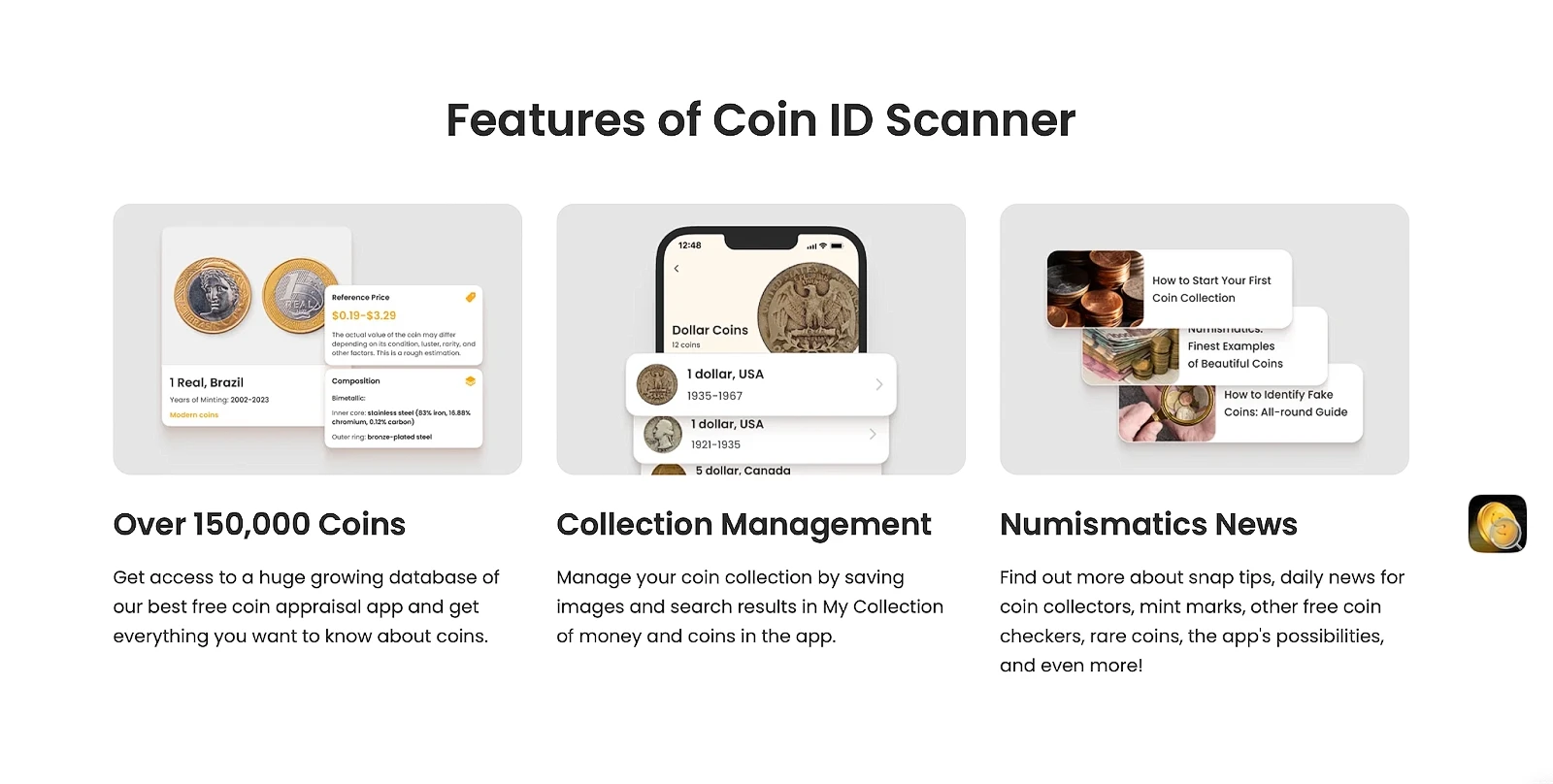
This AI-powered tool eliminates much of the guesswork and is ideal for both beginners and advanced hobbyists. If you are sitting on a large pile of unsorted coins, Coin ID Scanner can save you hours of tedious manual searching.
Top US Coins to Look for in Your Change
Certain coins are famous for slipping into circulation unnoticed, creating real opportunities for casual finders. Here are a few to keep an eye out for:
- 1972 Lincoln Cent with Doubled Die Obverse:
- How to Spot: Noticeable doubling on “LIBERTY,” “IN GOD WE TRUST,” and the date.
- Value: Up to $500 in circulated condition.
- 1999 Wide AM Lincoln Cent:
- How to Spot: A wider gap between the “A” and “M” in “AMERICA” on the reverse side.
- Value: $500 or more.
- Pre-1965 Dimes, Quarters, and Half Dollars:
- How to Spot: Check the rim — no copper stripe means it’s likely 90% silver.
- Value: Based on silver content, often several times face value.
- Wheat Pennies (Pre-1959):
- How to Spot: Reverse side features two wheat stalks.
- Value: Some key dates and mintmarks command $100+.
- War Nickels (1942-1945):
- How to Spot: Large mint mark (P, D, or S) above Monticello.
- Value: Contains 35% silver, boosting intrinsic and collector value.
- 1913 Liberty Head V Nickel:
- How to Spot: Extremely rare; authentic examples are often in museums.
- Value: Estimated at millions of dollars.
Pro Tip: While finding a 1913 Liberty Head V Nickel is nearly impossible, knowing what to look for will sharpen your skills for more likely valuable finds.
Essential Resources for Coin Collectors
Whether you’re a beginner or looking to deepen your expertise, using reliable resources can dramatically improve your success rate. Here are some trusted options that every aspiring coin hunter should know:
| Resource | What It Offers |
| PCGS CoinFacts | The largest online encyclopedia of US coins; includes images, price guides, and minting details. |
| Numismatic Guaranty Company (NGC) | Grading standards, population reports, and comprehensive coin explorer tools. |
| USA Coin Book | Lists of key dates, error coins, and up-to-date value estimates. |
| American Numismatic Association (ANA) | Offers educational courses, coin clubs, and nationwide events for collectors. |
| Coin ID Scanner App | AI-driven instant identification and valuation, perfect for scanning large batches of coins. |
Tips for Caring for Your Coin Finds
Discovering a valuable coin is only the beginning — preserving its condition is crucial if you want to maximize its worth. Mishandling can instantly slash a coin’s value, even if it’s rare. Follow these best practices:
- Handle Coins Carefully: Always hold coins by the edges. Avoid touching the faces to prevent oil and dirt from transferring from your skin.
- Wear Cotton Gloves: Soft cotton gloves minimize the risk of scratches or smudges.
- Use Proper Storage: Store coins individually in acid-free holders, archival-quality flips, or coin albums. Avoid materials containing PVC, as it can chemically react and damage the coin.
- Control the Environment: Keep your collection in a cool, dry place, ideally away from direct sunlight and humidity.
- Never Clean Coins: Cleaning, even gently, often causes microscopic scratches and dulls original surfaces, which can greatly reduce market value.
Proper care ensures that if — or when — you decide to sell, your coins will attract the highest offers.
This hobby also offers more than monetary rewards. It connects you with America’s rich past, introduces you to vibrant collector communities, and hones skills in research and attention to detail. Even if you don’t stumble upon a million-dollar find, the thrill of the search itself is addictive and rewarding.
Ready to Start?
- Grab a magnifier.
- Download the Coin ID Scanner app for effortless identification.
- Dive into your change jar — your very first hidden gem might be waiting at the bottom.
Happy hunting! 🪙

